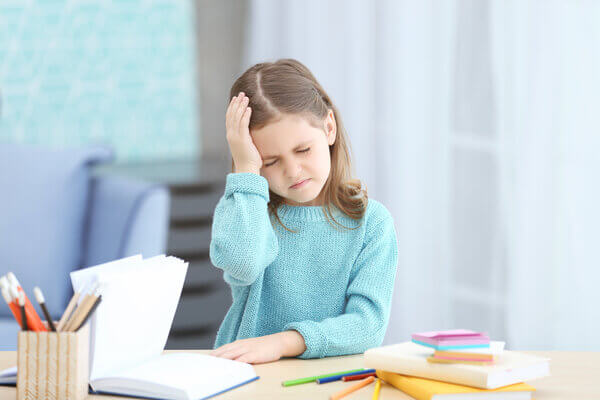Childhood Headaches / Migraines
Nurturing young minds and relieving childhood headaches.
Discover Cotlew St. Osteopathy’s care today.
Childhood is a time of wonder, exploration, and boundless energy. However, it’s not uncommon for our children to experience headaches, disrupting their otherwise care-free days. As parents and caregivers, it’s crucial to recognise the signs, understand the causes and explore effective solutions to ensure the well-being of our children.
Understanding childhood headaches
A headache can come in many forms but generally results in pain, ache or pressure throughout various places on the head. Headaches in children can be caused by various factors, ranging from stress and fatigue to underlying health conditions. It’s best if parents can be observant and note any patterns, triggers or accompanying symptoms to help identify the cause.


Common causes:
- Stress and Anxiety – children may experience stress and anxiety due to school pressures, social dynamics or family issues, leading to tension headaches.
- Screen Time and eye strain – excessive use of digital devices can strain a child’s eyes, leading to headaches.
- Dehydration or hunger – children may forget or skip meals and drinks, triggering headaches.
- Sleep patterns – irregular sleep or not enough sleep can lead to headaches in children.
- Genetic factors – having a family history of migraines or severe headaches can predispose a child to having these aswell.
- Poor posture – hours spent sitting hunched over the school desk with rounded shoulders and a neck that falls forward can add extra tension through the top of the neck, leading to cervicogenic headaches.
Understanding childhood migraines
Migraines are a more severe form of headaches and can be particularly challenging for children. They often come with additional symptoms of nausea, vomiting, sensitivity to light, fatigue and aura. These can be very frightening for a child which heightens the intensity of the migraine further.
Osteopathic treatment and management of headaches and migraines requires that each child has an acute management plan. Often for migraines anti-inflammatory medications are a frontline defense, as is resting in a quiet room and sleeping if possible. If there is severe nausea and vomiting, the use of anti-emetic medications may also help. A thorough case history and physical examination by the Osteopath may reveal underlying causes which can then be addressed throughout the treatment plan. Most tension and cervicogenic headaches respond well to Osteopathic treatments or manual therapy.

Cotlew St. Osteopathy
Frequently Asked Questions
A study into childhood headaches and migraines showed:
- 60% of children will experience significant headaches.
- 7-9.1% of children will suffer migraines.
Abu-Arafeh et al. Prevalence of headache and migraine in children and adolescents: a systematic review of population studies. Dev Med Child Neurol 2010; 52(12): 1088-1097
There are two more common types of migraines that children may suffer from:
- Cyclic Vomiting Syndrome.
Onset is generally between 4-7 years of age and starts during the night or early morning with vomiting episodes. Treatment is usually anti-emetic medication as soon as symptoms start. It is also the second most common cause of vomiting in children after reflux.
- Abdominal Migraine.
These are isolated episodes of moderate to severe central abdominal pain (around the belly button), with nausea and vomiting. Onset is usually 4-7 years of age, with more females suffering from it than males.
Cotlew St. Osteopathy
Understanding and addressing childhood headaches and migraines is vital for the wellbeing of our children.
By being proactive and seeking professional guidance when needed, we can ensure that they enjoy a happy and healthy childhood.
If your child is experiencing persistent headaches or migraines, consult with Cotlew St. Osteopathy today. Victoria can personalise a treatment plan for your child and help manage their symptoms with the aim of finding the cause, thereby getting them back into the activities that they love again sooner.